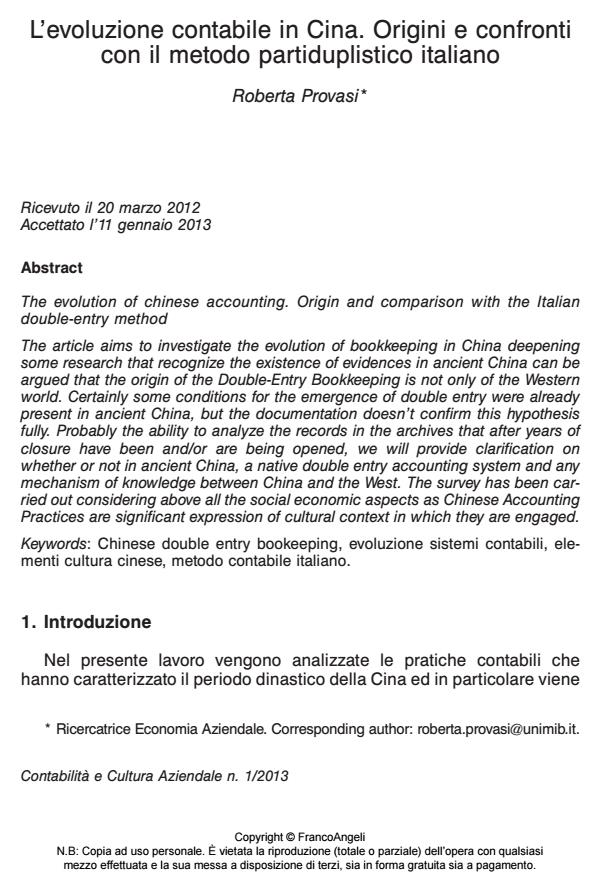L’evoluzione contabile in Cina. Origini e confronti con il metodo partiduplistico italiano
Titolo Rivista CONTABILITÀ E CULTURA AZIENDALE
Autori/Curatori Roberta Provasi
Anno di pubblicazione 2013 Fascicolo 2013/1
Lingua Italiano Numero pagine 25 P. 91-115 Dimensione file 526 KB
DOI 10.3280/CCA2013-001005
Il DOI è il codice a barre della proprietà intellettuale: per saperne di più
clicca qui
Qui sotto puoi vedere in anteprima la prima pagina di questo articolo.
Se questo articolo ti interessa, lo puoi acquistare (e scaricare in formato pdf) seguendo le facili indicazioni per acquistare il download credit. Acquista Download Credits per scaricare questo Articolo in formato PDF

FrancoAngeli è membro della Publishers International Linking Association, Inc (PILA)associazione indipendente e non profit per facilitare (attraverso i servizi tecnologici implementati da CrossRef.org) l’accesso degli studiosi ai contenuti digitali nelle pubblicazioni professionali e scientifiche
The article aims to investigate the evolution of bookkeeping in China deepening some research that recognize the existence of evidences in ancient China can be argued that the origin of the Double-Entry Bookkeeping is not only of the Western world. Certainly some conditions for the emergence of double entry were already present in ancient China, but the documentation doesn’t confirm this hypothesis fully. Probably the ability to analyze the records in the archives that after years of closure have been and/or are being opened, we will provide clarification on whether or not in ancient China, a native double entry accounting system and any mechanism of knowledge between China and the West. The survey has been carried out considering above all the social economic aspects as Chinese Accounting Practices are significant expression of cultural context in which they are engaged.
Parole chiave:Chinese double entry bookeeping, evoluzione sistemi contabili, elementi cultura cinese, metodo contabile italiano.
Roberta Provasi, L’evoluzione contabile in Cina. Origini e confronti con il metodo partiduplistico italiano in "CONTABILITÀ E CULTURA AZIENDALE" 1/2013, pp 91-115, DOI: 10.3280/CCA2013-001005